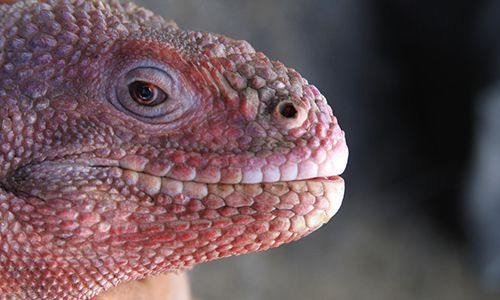
🦎 Pink iguana babies spotted for the first time ever
For the first time ever, pink iguana hatchlings and babies have been spotted on the Galápagos islands. This brings so much hope to scientists.
Share this story!
For the first time since 1986 when the species was first discovered, pink iguana babies have been spotted in the wild. This species was immediately identified as facing a big risk of extinction. Between 200-300 individuals are thought to exist on Wolf Volcano on Isabella Island.
After a ten month long expedition done by the Galápagos National Park Directorate of Ecuador, and the Galápagos Conservancy of the U.S, hidden cameras have revealed that the species is still building nests and procreating. The hidden cameras also identified the extensive threat to the rare species - non-native feral cats. This information will be helpful when drafting a strategy that can save the pink iguanas.
“Excellent news for our country! Pink iguana hatchlings and juveniles were discovered for the first time after years of research,” cheered the Ecuadorian Minister of the Environment. “This is thanks to a collaboration between the GNPD and the Galápagos Conservancy. Congratulations to everyone who contributed to this discovery!“
“The discovery of the first-ever nest and young pink iguanas together with evidence of the critical threats to their survival has also given us the first hope for saving this enigmatic species from extinction.” Paul Salaman, president of Galápagos Conservancy, said in a statement. “Now, our work begins to save the pink iguana.”
Back in 2021, Initiative Galápagos - a program to reverse all species declines on the islands - funded the expedition. Now, a monitoring station has been placed on the remote Wolf Volcano in order to keep “scientific eyes on these vulnerable reptiles”, Good News Network explaines.
It’s a bit tricky to conserve these species mostly because of the terrain and nature of the Wolf Volcano. The pink iguanas nest 5600 feet above sea level where there is little shade and the temperatures can rise to 100 °F, and 160 °F at the level of the ground. Meanwhile at night, the temperature drops to 50 °F with a strong, constant and freezing wind. Also, the iguanas can bite a finger off without any problems if they get the opportunity so handling them is kept to a minimum.
Protecting all species - animal, plant and human - will help a brighter future come sooner.
Picture: CNP via Galapagos Conservation Trust
By becoming a premium supporter, you help in the creation and sharing of fact-based optimistic news all over the world.


